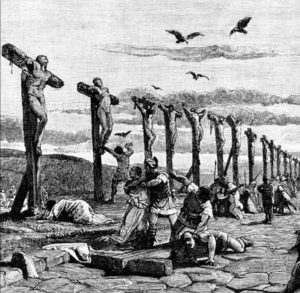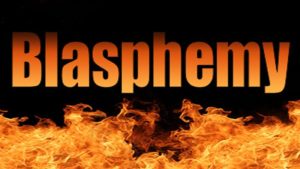Zechariah’s Donkey Prophecy
Zechariah’s Messiah prophecy focused on a donkey is one of those prophetic rarities that is very specific. More precise than even the Micah prophecy foretelling the future Ruler of Israel would come from Bethlehem Ephrathah.[1]
Zech 9:9 “Rejoice greatly, O daughter of Zion! Shout, O daughter of Jerusalem! Behold, your King is coming to you; He is just and having salvation, Lowly and riding on a donkey, a colt, the foal of a donkey.”(NKJV)
Straightforward and to the point, Jewish sage Rabbi Rashi commented on the prophecy: “It is impossible to interpret this except as referring to the King Messiah.”[2]
Not just any lowly donkey, it was prophesied to be a colt, a foal which is a male under a year old. At that age, the colt foal would be unridden, unbroken.
When broken, donkeys still have a reputation for their unruly and difficult behavior, especially when they are in unfamiliar or frightening scenarios.[3] Yet the future King of Israel was prophesied by Zechariah to enter Jerusalem riding one such donkey colt foal.
Written between 520 – 518 BC, the prophecy was issued decades after the last king of Israel, Jeconiah, sat on the Throne of David when Jeconiah was taken captive by Nebuchadnezzar’s army in 597 BC.[4] Last of the sitting Jewish Kings, he was deported to Babylon along with “the most distinguished men of the land, and the most valuable treasures of the Temple and the palace.”[5]
Successors of the Babylonian empire, Persian rulers Cyrus the Great, King Darius the Great and King Artaxerxes, issued decrees to rebuild the Temple in Jerusalem.[6] Additional decrees were necessary because political shenanigans by enemies of Israel attempted to thwart the rebuilding effort.
Scrolling forward five centuries sets the stage when Jesus of Nazareth had reached the end of his 3-year ministry.[7] Saturday, the night before entering Jerusalem for the last time, Jesus attended a dinner event at the home of Simon the leper in Bethany where attendance included the 12 Disciples and siblings Martha, Mary and Lazarus.[8]
Sunday, the next day, began the shortened week with a special Passover celebration. Approaching was the day before Passover described in John as a “high,” or “special” Sabbath, depending on the translation.[9]
One of the Disciples asked Jesus where they would be eating the upcoming Passover meal in Jerusalem? He did not answer the question directly and gave no specific information, just clues.
Matthew and John Gospel accounts report that Jesus had instructed two Disciples, identified as Peter and John, to go into Jerusalem to find a mother donkey with its colt and bring them both back to him. Had Jesus wanted only a donkey to ride, he would have been expected to instruct the pair of Disciples to simply find a donkey to bring back home.
Finding a mother donkey with a foal colt made the search much more challenging. Jesus had instructed them that if anyone were to ask why they were taking the donkeys, they were to say, “The Lord has need of it.”[11]
Aimlessly entering the big city looking for the clues Jesus had given to them, Peter and John found a tethered mother donkey with its colt.[10] As they untied it, a man asked why they were taking his donkeys?

Answering as instructed, they were then led by the man with the donkeys to a house with an upper room prepared for the Passover. After they viewed the room, the owner allowed the two Disciples to take the two donkeys back to Jesus.
Entering Jerusalem for the last time, all four Gospel authors wrote about that Sunday when Jesus rode into the city seated on a donkey colt.[12] Jewish Encyclopedia cites the description in John “which has the story preserved in its original form” describing the crowd shouting “Hosanna.”[13]
MT 21:6-9 “The disciples went and did as Jesus had instructed them. They brought the donkey and the colt and placed their cloaks on them for Jesus to sit on. A very large crowd spread their cloaks on the road, while others cut branches from the trees and spread them on the road. The crowds that went ahead of him and those that followed shouted, “Hosanna to the Son of David!” “Blessed is he who comes in the name of the Lord!” “Hosanna in the highest heaven!”(NIV)
Less than a week before his crucifixion, Jesus made his final entry into Jerusalem riding on a donkey colt precisely matching the Zechariah 9:9 Messiah prophecy. In Christianity, the Sunday event the weekend before Easter is celebrated as “Palm Sunday.”[14]
Since Jesus entered Jerusalem for the last time riding on a donkey colt, was the Zechariah Messiah prophecy fulfilled or was that event merely a coincidence?
Updated January 26, 2024.
This work is licensed under a Creative Commons Attribution-NonCommercial-NoDerivatives 4.0 International License.
REFERENCES:
[1] CR Micah 5:1(2).
[2] Zechariah 9:9. Complete Jewish Bible with Rashi Commentary. Chabad.org. 2021. <https://www.chabad.org/library/bible_cdo/aid/16213/showrashi/true
[3] Luke 19:35. “Understanding Donkey Behavior.” The Donkey Sanctuary. 2018. <https://www.thedonkeysanctuary.org.uk/sites/sanctuary/files/document/142-1404405754-donkey_health_and_welfare_19.pdf>
[4] Ryrie Study Bible. Ed. Ryrie Charles C. Trans. New American Standard. 1978. “Introduction to the Book of Zechariah.”
[5] “Captivity, or Exile, Babylonian.” Jewish Encyclopedia. 2011. < http://www.jewishencyclopedia.com/articles/4012-captivity>
[6] Ezra 1:1-3, 4:4-6, 6:14-15; Nehemiah 6:15; 12:45; Ezekiel 1:2-3; 6:7,12; 7:12-13, 23, 26. Josephus, Flavius. Antiquities of the Jews. 1850. Book XI, Chapter II. The Complete Works of Josephus. Trans. Commentary by William Whitson. < http://books.google.com/books?id=e0dAAAAAMAAJ&printsec=frontcover&source=gbs_ge_summary_r&cad=0#v=onepage&q&f=false > “Cyrus the Great.” Encyclopædia Britannica. 2018. <https://www.britannica.com/biography/Cyrus-the-Great> “Darius I.” Encyclopædia Britannica. 2021. <https://www.britannica.com/biography/Darius-I> “Building the Second Temple.” My Jewish Learning. 2019. <https://www.myjewishlearning.com/article/second-templer> Cohney, Shelley. The Jewish Temples: The Second Temple.” Jewish Virtual Library. 2019. <https://www.jewishvirtuallibrary.org/the-second-temple>
[7] CR Matthew 23:19-39. Luke 13:31-35. I Kings 18:13-15; 19:14. 2 Chronicles 24:19-22; Jeremiah 26:7-16, 18-19, 20-23; 38:1-13.>
[8] Matthew 23:37-39. Luke 13:31-35.
[9] John 12:1-2, 4. CR Matthew 26:6; Mark 11:1, 14:3; Luke 10:38-39, 19:29.
[10] John 19:31. BibleHub.com. 2021. <https://biblehub.com/john/19-31.htm> CR Mark 15:42. “Donkeys.” Spana. photo. n.d. <http://3.bp.blogspot.com/-Q6u66St0FLo/TtOPYk1j-9I/AAAAAAAAEjI/PI95dFfdxDU/s1600/donkeys.jpg>
[11] Luke 19:28-37. CR Matthew 21:1-7.
[12] Matthew 21:7; Mark 11:7; Luke 19:28; John 12:1.
[13] “Hosanna.” Jewish Encyclopedia. 2021. <https://jewishencyclopedia.com/articles/7893-hosanna>
[14] “Palm Sunday.” Encyclopædia Britannica. 2021. <https://www.britannica.com/topic/Palm-Sunday>


